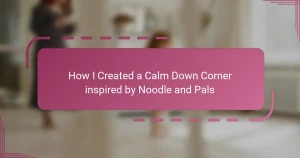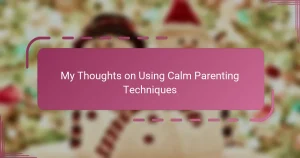Key takeaways
- MindUp Program promotes mindfulness and social-emotional learning, helping parents manage stress and enhance emotional connection with children.
- Daily activities like mindful breathing, gratitude sharing, and mindful listening foster a calm environment and improve empathy within the family.
- Consistently incorporating MindUp practices into routines can transform parenting experiences, leading to increased patience and reduced frustration.
- Creating a dedicated space for mindfulness and integrating practices into daily life can enhance engagement and make mindfulness feel more natural for children.

Introduction to MindUp Program Practices
When I first came across the MindUp Program, I was curious but a bit skeptical—could simple practices really make a difference in daily parenting? The program’s focus on mindfulness and social-emotional learning felt refreshing and practical, especially for busy families like mine. Have you ever wondered how teaching kids to be aware of their feelings might change the way they handle challenges?
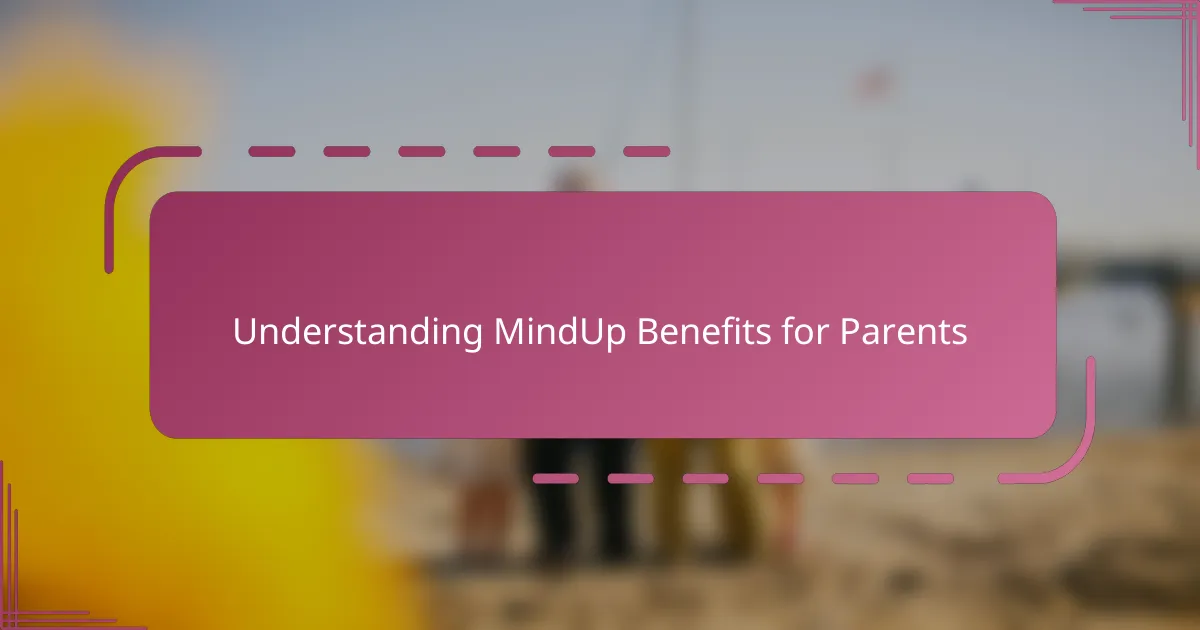
Understanding MindUp Benefits for Parents
Understanding MindUp Benefits for Parents
What struck me most about MindUp was how it helped me stay calmer during stressful parenting moments. Instead of reacting impulsively, I found myself pausing and turning my attention inward to breathe and refocus. Have you noticed how a few mindful breaths can sometimes completely change the tone of a difficult conversation with your child?
Beyond just calming strategies, MindUp opened my eyes to the power of empathy—not only toward my children but also toward myself as a parent. It encouraged me to recognize my own emotions without judgment, which made me more patient and connected. Honestly, practicing mindfulness feels less like a task and more like a gift I give myself every day.

Daily MindUp Activities for Children
One of the daily MindUp activities I’ve found most grounding is the simple “brain break” where we all pause to take three deep, mindful breaths together. It’s amazing how just a minute of focused breathing can shift the energy in the room from chaos to calm. Have you ever tried this with your kids when tensions rise? It really creates a small but powerful reset.
Another practice I love is the gratitude activity, where each of us names one thing we appreciate at the start of the day. I’ve noticed this sets a positive tone, and my children begin to look for the good moments around them naturally. It’s heartwarming to hear what little things they choose — it often surprises me and reminds me to slow down and notice life’s simple joys too.
Lastly, we incorporate mindful listening during family conversations. By encouraging my kids to pause and really hear each other without interrupting, I see their empathy grow in real time. It’s not always easy, especially with younger children, but witnessing their efforts to understand one another feels like a meaningful step toward emotional intelligence. Have you observed how much more connected your family feels when everyone is truly present?

Incorporating MindUp into Parenting Routine
Incorporating MindUp into my parenting routine felt natural once I realized these small moments of mindfulness could be easily woven into our busy day. For instance, before homework time, I started leading a quick mindful breathing exercise with my kids. It was surprising how this brief pause calmed their restless energy and helped us focus better as a team.
Another way I blend MindUp practices is by turning everyday activities into opportunities for gratitude and presence. During dinner, we take turns sharing something good about our day, which often sparks genuine smiles and deeper conversations. Have you noticed how these tiny rituals can strengthen your connection with your children without requiring extra time or effort?
Sometimes, the hardest part is reminding myself to stay consistent. Yet, when I catch myself reacting less to frustration and more with patience, I know MindUp is working. How often do we crave that sense of calm and presence in parenting moments? For me, incorporating these practices has become not just helpful but essential.
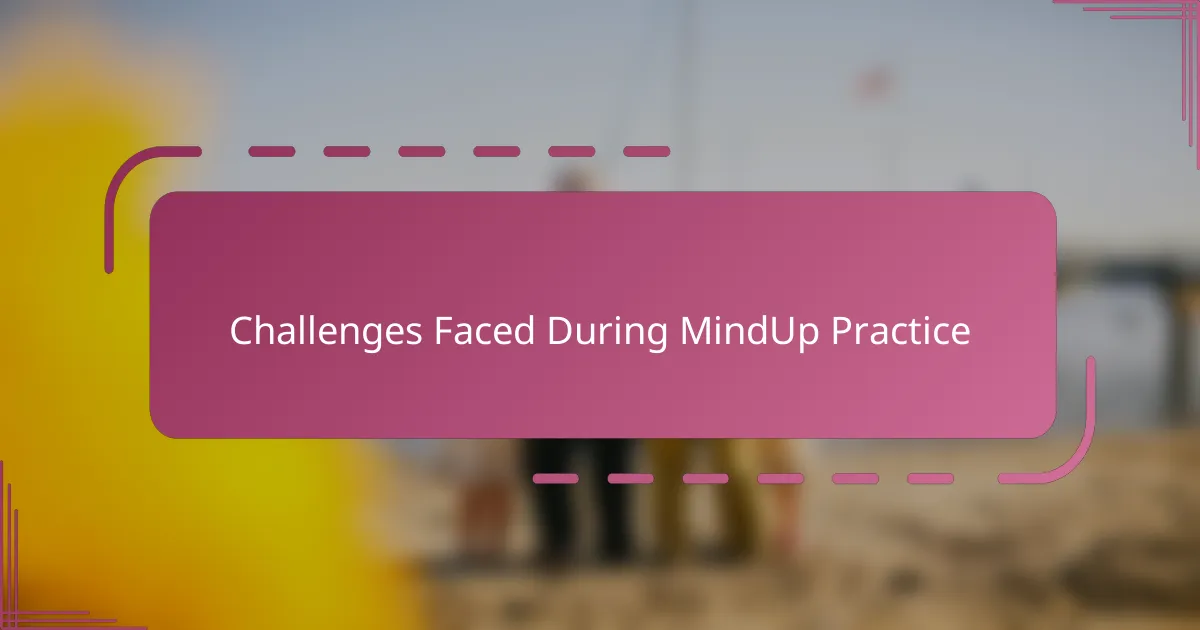
Challenges Faced During MindUp Practice
At first, one challenge I faced with MindUp was simply remembering to pause and practice mindfulness amidst the chaos of daily life. Between juggling work, school runs, and household tasks, finding those quiet moments felt almost impossible. Have you ever caught yourself rushing through a mindful exercise, wondering if it’s really making a difference when you’re so pressed for time?
Another obstacle was getting my children fully engaged, especially when their attention span was short or they were tired. Some days, it felt like convincing them to take deep breaths or listen carefully was an uphill battle. Yet, I learned patience through these moments, realizing that consistency is more important than perfection. Have you noticed how children sometimes respond best when mindfulness becomes part of a relaxed routine rather than a strict task?
Lastly, I struggled with my own internal resistance—doubts about whether I was ‘doing it right’ or if mindfulness was just another parenting fad. This doubt sometimes made me skip sessions or half-heartedly participate. But slowly, observing even tiny shifts in our family’s mood convinced me of its value. Do you find yourself grappling with similar uncertainties before fully embracing new parenting techniques?

Personal Results from Using MindUp
Using MindUp has genuinely transformed how I experience parenting on a daily level. I remember a moment when my child was overwhelmed with homework frustration—I instinctively guided us both through a mindful breathing exercise, and the shift was immediate. It felt like I had found a simple, powerful tool that brought not just calm but hope into a stressful situation.
Over time, I noticed my patience growing, which surprised me. Instead of feeling drained after a challenging day, I found a new sense of balance within myself. Have you ever experienced the relief of catching a parental meltdown before it even begins? That’s what MindUp brought to my family—a proactive calm that I never thought was possible.
But the most rewarding change has been seeing my children respond with more empathy and self-awareness. When they pause to articulate their feelings instead of acting out, it feels like a breakthrough for all of us. Do you think that mindful moments can truly change a child’s emotional world? In my experience, the answer is a wholehearted yes.
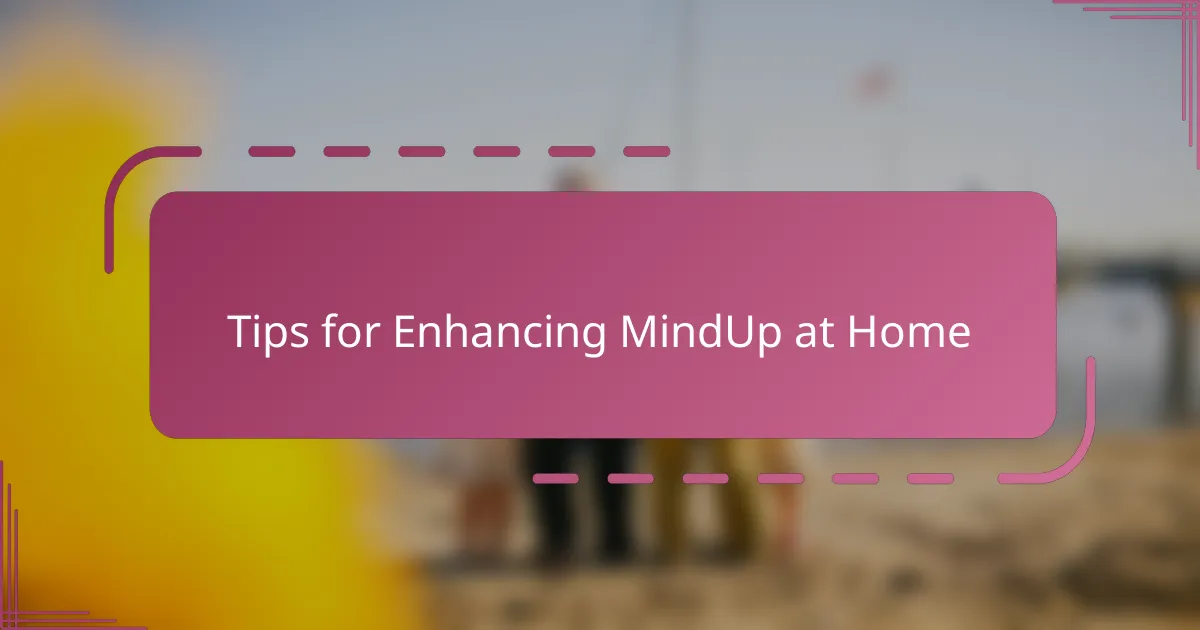
Tips for Enhancing MindUp at Home
One tip I’ve found invaluable is to create a dedicated MindUp corner at home—somewhere cozy with cushions, soft lighting, and maybe a small timer for mindful breathing exercises. Having a special spot signals to my kids that mindfulness is an important, calming activity, not just another chore. Have you tried setting up a mindfulness nook in your home? It surprisingly boosts participation and enthusiasm.
I also recommend weaving MindUp moments into daily routines where they naturally fit, like during car rides or while waiting in line. These short, informal practices feel less forced and keep mindfulness present without adding extra tasks. For example, humming a calming tune together or sharing one positive thought aloud turns mundane moments into intentional pauses.
Finally, consistency matters, but flexibility is key. On hectic days, I sometimes simplify the practice to just one mindful breath or a quick check-in on emotions with my kids. Even this small pause helps maintain the habit and reminds everyone that mindfulness isn’t about perfection, but presence. Have you noticed how those tiny shifts can still create a big impact? I certainly have.

